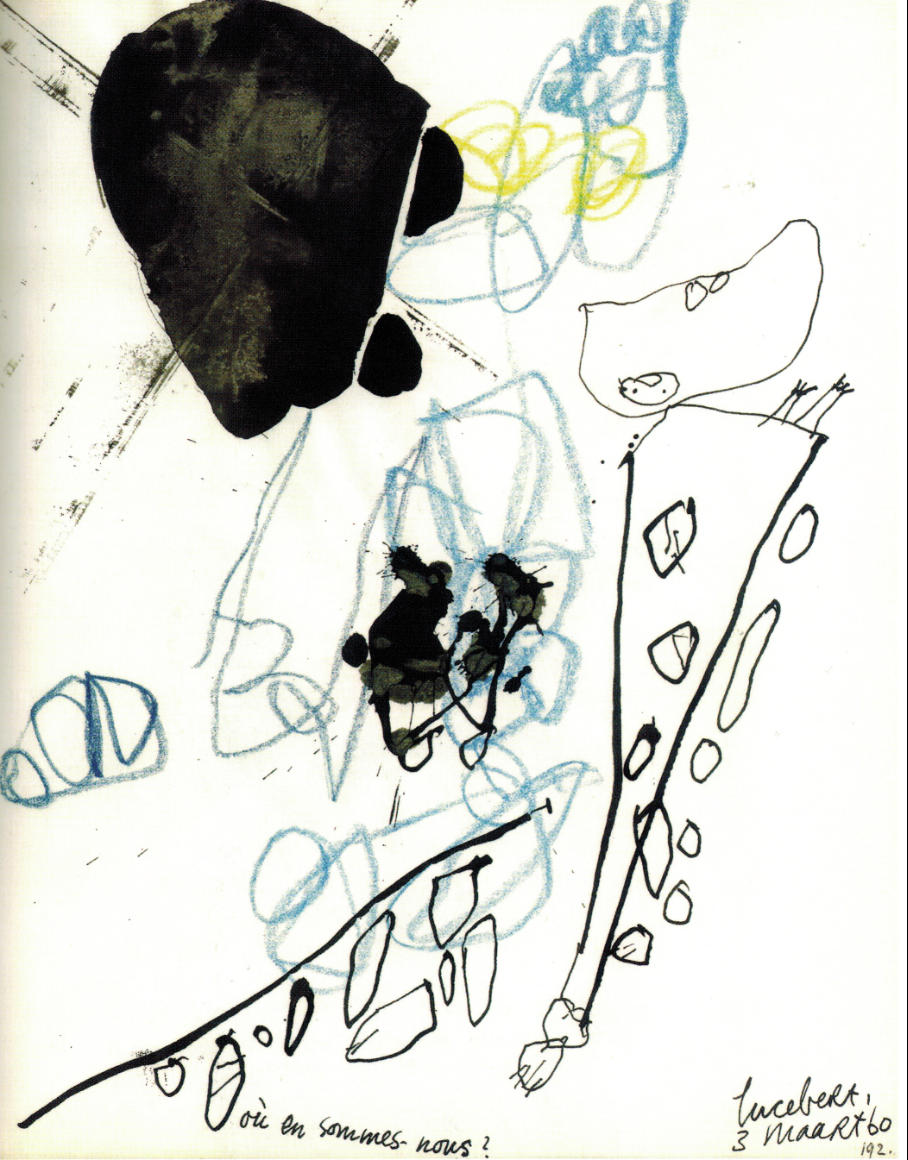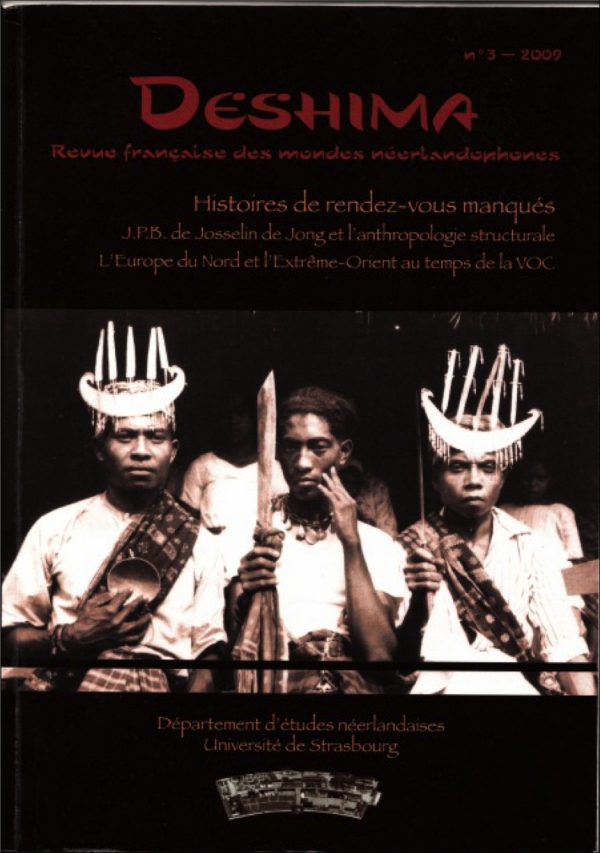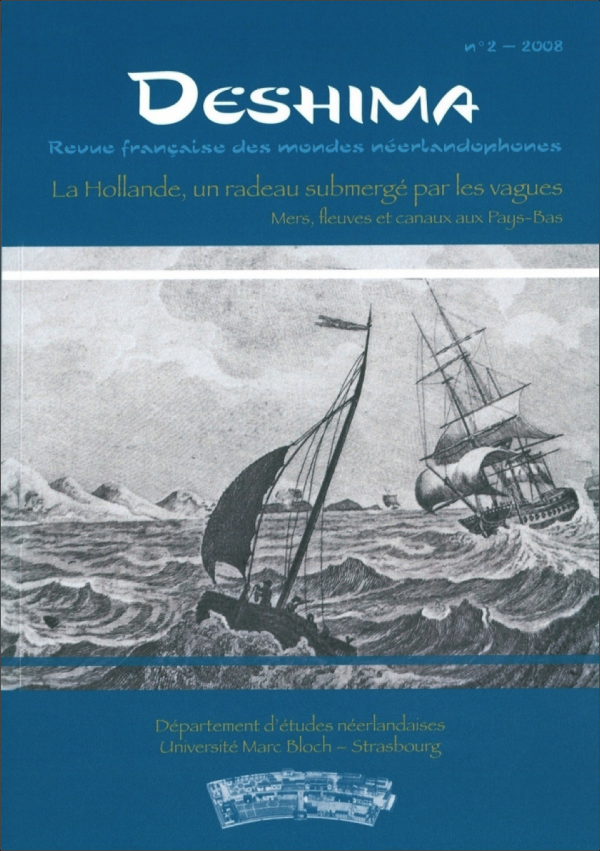Europe du Nord
DESHIMA, hors-série n° 1
Après trois ans d'existence, la revue française des mondes néerlandophones Deshima s'élargit au reste des pays du Nord. Cela devrait se traduire par un rythme de parution plus soutenu : deux numéros par an au lieu d'un, l'un étant plutôt consacré à la Scandinavie, l'autre aux terres d'expression néerlandaise.

Sommaire du numéro hors-série 1 - 2009
Capitales culturelles et Europe du Nord /
Kulturhauptstädte Nordeuropas
Thomas Beaufils & Thomas Mohnike, « Deshima grandit ! », p. 5
Sylvain Briens, « Capitales culturelles. Quelques éléments de définition », p. 7
Arne Melberg, « Wo ist der Süden? Wo ist der Osten? Literarische Varianten europäischer Grenzen », p. 17
Sylvain Briens, « Paris, capitale culturelle scandinave du XIXe siècle ? Pèlerinages symboliques et transferts culturels », p. 33
Javier Maestro, « Helsingfors (Helsinki), capitale culturelle à la fin du XIXe siècle », p. 51
Lidia Gluchowska, « Totenmesse, Lebensfries und Die Hölle. Przybyszewski, Munch, Vigeland und die proto- expressionistische Kunsttheorie », p. 79
Annie Bourguignon, « Art et mégalopole. Vilhelm Ekelund et Berlin », p 117
Hubert F. van den Berg, « Der Sturm als Kunsthandlung und Nachrichtenbüro in der deutschen Propagandapolitik in den neutralen Nachbarländern während des Ersten Welt- kriegs », p. 135
Klaus Müller-Wille, « CoBrA und Fin de Copenhague. Strategien kultureller Dekapitation im Umfeld Asger Jorns », p. 153
Per Bäckström, « Stockholm – Hauptstadt der skandi- navischen Avantgarde der 1960er Jahre », p. 183

Résumés
Sylvain Briens, Paris as Nordic Cultural Capital of the 19th century? Symbolic pilgrimages and cultural transfers
At the end of the 19th century, a number of Nordic writers met in Paris, which represented a cultural capital for modernity in Europe. They wanted to escape from the intellectual environment of the Nordic capitals, which they considered as peripheries, in search for inspiration, stimulation and recognition. The aim of the article is to analyse in which way Paris became, in parallel with other cities such as Berlin, a place for aesthetic innovation and a centre for the Nordic writers in the construction of the modern project. It mainly focuses on the impact of Parisian intellectual environment on Nordic literary production at the end of the 19th century. By studying geographical, intellectual and social contexts of cultural fields, as well as by analyzing transfers and cultural mediations, it attempts to define the role of Paris as Nordic cultural capital of the 19th century.
Arne Melberg, Wo ist der Süden? Wo ist der Osten? Literarische Varianten europäischer Grenzen
Borders and limits are of obvious importance in Europe: this is demonstrated daily by masses of more or less illegal immigrants and by other forms of so-called trafficking. The article analyses literary versions of two specific frontiers in the works of a wide range of European authors: The South and the East, both showing quite different characteristics. The literary version of the border called South gives us something that is definite and dividing – although the components making up the borderline have shifted during the ages. The border called East, on the other hand, seems vague and extensive, more of a zone than a dividing line. In both cases, however, mythological interest is invested: the border – line or zone – is a place of drama and conflict, ultimately a drama of civilization. However, the literary investigations of the border are not concerned with law or traffic. The borders described are all located in the haven of imagination.
Javier Maestro, Helsinki (Helsinfors) as Cultural Capital at the turn of the century?
Helsinki, the capital of Finland, was called at the turn of the century by its Swedish name Helsingfors. At that time, it was the capital city of the Grand Duchy of Finland, a territory that was part of the Russian Empire. The article describes the cultural and political development of Helsingfors during the 19th Century. It evaluates the influence of Saint Petersburg and the heritage of the Swedish culture in the process that would lead Finland to autonomy. Through the creation of a number of modern newspapers published in Swedish or in Finnish and based in Helsingfors, the city contributed to the creation of a liberal public opinion in Finland. The article stresses finally the importance of the world exhibitions in Paris and London for the international recognition of a Finnish national cultural identity.
Lidia Głuchowska, Requiem Mass, Frieze of Life and Hell. Przybyszewski, Munch, Vigeland and the proto-expressionistic art theory
The article investigates in the beginnings of expressionistic art theory. It emphasises hereby the importance of the cross-aesthetic dialogue between the Norwegian artists Edvard Munch and Gustav Vigeland with the Polish-German author and critic Stanisław Przybyszewski. They made their acquaintance in the modernist milieu of end 19th century Berlin, but expanded their dialogue and activities to the major cities of Eastern, Central and Western Europe as Paris and Prague. Przybyszewski’s studies on Munch and Vigeland express an understanding of the artist and the viewer not merely as an aesthetic sensual subject, but as creators of their own right. These works did have an incontestable influence on the two artists and far beyond. However, those impacts remain to be studied in detail.
Annie Bourguignon, Art and Megapolis. Vilhelm Ekelund and Berlin
The article analyses the circumstances that led the Swedish poet and aphorist writer Vilhelm Ekelund to stay several years in Berlin at the beginning of the 20th century. Although Ekelund production is considered as one of the first examples of modernist poetry in Sweden, his attitude towards modernity has been globally negative. During his stay in Berlin, he suffered of the urban environment. In his essays and articles on the city, he condemned the way of life in the megapolis. His main interest in the German cultural life was the Neo-Hellenist tradition from Lessing to Nietzsche and the work of Goethe. The reading of Nietzsche was decisive for Ekelund and his inclination for Pre-Socratic philosophy. He claimed that the German culture represented classicism as opposed to modernity. He never became a poet of the megapolis. However, he did not reject totally the urban environment he experienced, and his stay in Berlin would have some influence on his later literary production.
Hubert F. van den Berg, Der Sturm as art gallery and intelligence agency in German propaganda in the neutral neighbouring countries during the First World War
In the centre of studies that analyze the processes of transnational cultural transfers, individual agents often figure as artists and patrons or institutions like theatres, museums, publishing companies or galleries. However, intelligence agencies may have developed an important influence as well. The article describes the secret activities of the well known expressionistic Berlin based gallery Der Sturm as one private branch of German propaganda politics during First World War. That private secret news agency, steered by Nell Walden-Rosland, used its image as apolitical art institution to promote covertly specific political contents in Scandinavian and Dutch press that would depict Germany as a cultural power.
Klaus Müller-Wille, CoBrA and Fin de Copenhague – Strategies of cultural decapitation in the milieu of Asger Jorns
The theme of cultural capitals and the intimately connected ideas of modernity and avant-gardes had been in the centre of critical assertions by the Danish artist Asger Jorn from his early beginnings. The article studies texts from different periods of his production, deriving from his various engagements in groups as CoBrA, the International movement for an Imaginist Bauhaus and The Situationist International. All these endeavors tented to subvert the predominance of cultural capitals and the homogenization of European avant-garde movements. As a counterpoint, specific national traditions are used to enforce the development of art in the Post-war period.
Per Bäckström, Stockholm – Capital of the Nordic Avant-Gardes of the 1960s
The topic of this article are challenges inherent in writing the history of the Nordic neo-avant-garde. Firstly, I will present a brief outline of the historical situation in which the movement developed in the 1960s, with focus on Stockholm as the cultural capital of the time, and on the international exchange that took place between artists and groups. Secondly, the “art-works” of the neo-avant-garde will be discussed. These can often be characterized as both cross-aesthetic and performative, a fact that articulates certain problems for a historical analysis. I will proceed from the easily describable to more complex issues, in order to illustrate some of the main difficulties for the study of the Nordic avant-garde.








